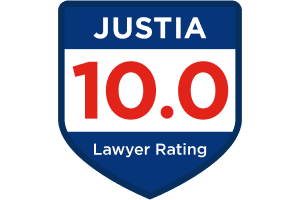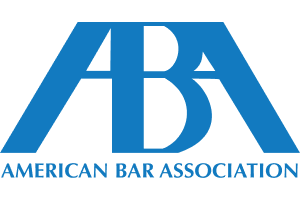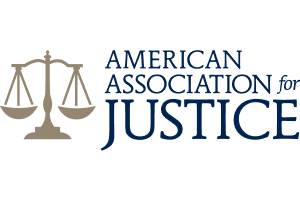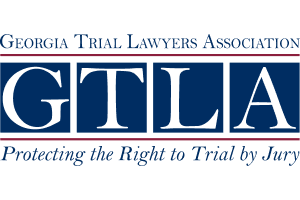In Verdicts & Settlements Recovered
Handling your Georgia Personal Injury Claim – A Complete Guide
I was in an Accident in Georgia. How do I Know if I Need a Personal Injury Lawyer?
To know whether you need to hire a Personal Injury / Accident Lawyer, you must first determine whether you have a claim at all. If you answer “yes” to the following questions, you are on the path to finding exactly the type of help you need.
Were You Injured in an Accident due to no Fault of Your own?
If the Answer is “Yes” – You may need an attorney.
If you were injured in an accident that was not your fault, you are allowed compensation for your property damage and medical payments among other things. Sometimes liability (fault) in an accident is simple to establish, and other times it is more difficult. When there are questions regarding who is at fault, it is always best to enlist the help of an experienced personal injury lawyer.
Accidents include, but are not limited to:
- Car Accidents
- Boating Accidents
- Trucking Accidents
- Motorcycle Accidents
- ATV Accidents
- Jet Ski Accidents
- Unsafe Premises
- Unsafe Products
- Pet Bites
Are Your Injuries Serious?
If the Answer is “Yes” – You most-likely will need an attorney.
No – You most-likely will not need an attorney.

Not all injuries are serious enough to require the help of an attorney, but not all accident victims know for sure how serious their injuries are right away. It is not uncommon for pain to peak on day two or three after an accident. When injuries are minor, it is possible for you to settle your own claim. Your injury attorney should be up-front with you and let you know if they feel you will require representation.
You should enlist the help of an attorney if your pain does not subside within a few days. Medical attention should be sought as soon as possible. Serious injuries often require hospitalization or surgery which can turn into weeks or even years of rehabilitation and physical therapy. These types of injuries often result in future medical expenses, loss of enjoyment of life, reduction or elimination of employment, and get to be quite complicated when it comes to reaching an agreement with the defendant’s insurance company. This is the time you should enlist the help of an experience personal injury lawyer.
The bottom line is this. Clients must be better off financially, having hired us, then they would have been without us. If the injuries are relatively minor, or if there are significant issues regarding the cause of the injuries, we will typically decline representation. If the injuries are very significant, but there is limited insurance coverage available, we will often advise the client that they may be able to handle their case on their own. Example: Client had broken bones and medical expenses of $50,000, and there is only $25,000 in liability and/or uninsured motorists’ coverage available. The potential client will likely be able to recover the policy limits on their own. In such cases, we typically provide guidance free of charge.
OK, so I Need a Personal Injury Lawyer. How Much Will it Cost?
At Casey W. Stevens Law: Alpharetta Personal Injury and Car Accident Lawyers, costs are broken into four components and are explained up front. These are the five factors relating to cost.
Consultations
Consultations in our office are always free.
Lawyer Fees

Unlike other types of attorneys, we charge you nothing up front. We put no money in our pocket until you put money into yours. What does that mean? We are paid out of the settlement as a percentage of the total recovery amount. This allows our clients to have the confidence that we will be doing everything possible to maximize the financial recovery allowed under the law. We don’t get paid if you don’t get paid.
Settlement
In some cases, it may not be necessary to file a lawsuit to obtain recovery. In such cases, the percentage of the total recovery paid to the lawyer as a fee is usually lower than if would be if a Georgia lawsuit was filed.
Litigation
Due to the additional time and costs associated with litigation and preparing for trial, the percentage of the total recovery paid to the lawyer as a fee slightly increases.
Expenses
All costs to prepare the case for settlement, mediation or trial are typically advanced by the attorney (unless otherwise specified) until a recovery is received. If a recovery is received, the expenses after recovery will come out of the client’s share of the proceeds. Expenses include the cost of mediators, expert witnesses, court reporters and the like.
What should I bring to my free consultation? Will I meet with the attorney?
Have you looked at the on-line reviews of the high case volume law firms? They aren’t so great, and in fact, your case will often not be handled by the attorney you thought you hired. Our free case evaluations are always handled by Attorney Stevens personally. He does not have law clerks or junior attorneys handling his new client meetings.
What a potential injury client needs to bring to our first meeting depends on the type of case. In car wreck cases, the information that would be helpful but is not required would include: police report, photos of the damage to the vehicles, photos depicting the injuries, auto insurance policy information, health insurance information, any medical documentation the client may have in their possession and anything else the potential client believes may be important.
What Other Things can an Accident Attorney do for Me, Which I can’t do for Myself?
First and foremost, the benefit to having an experienced personal injury attorney is that it will allow you to have peace of mind. You can concentrate on getting better while your attorney handles all of the legal issues. Along with our over twenty years of specializing in personal injury law, your personal relationship with our staff will give you the confidence that you made the right choice.

If a client has outstanding (unpaid) medical expenses, we offer assistance negotiating with the medical providers to reduce the amount the client must pay to satisfy the outstanding medical bills. This is typically done while we are in the process of negotiating a settlement with the at-fault party’s insurance company. In addition, if the client does not have health insurance, automobile medical payments coverage or some other source to pay their medical expenses while they are receiving medical treatment for their injuries (prior to resolution of their case against the at-fault party’s insurance company), my firm offers assistance to ensure that each client receives quality medical care to diagnose and treat his/her injuries. My firm has established relationships with medical funding companies and doctors in virtually every medical specialty that will provide the necessary medical care to my firm’s clients. In such situations, the doctor will provide the necessary medical treatment on what is called an “attorney lien.” Such an arrangement ensures that the client does not have to forego receiving the treatment they need due to an inability to pay and allows the client to receive good quality medical care without having to suffer the burden of paying “out of pocket” for the treatment. When the case is resolved, the medical expenses that were incurred on the “attorney lien” are paid out of the client’s share of the settlement proceeds.
What are the Steps to Handling a Georgia Accident Claim?
The case handling process usually begins with an in-person meeting with the potential client. During this meeting the attorney will gather information regarding the case and will make a determination as to whether there is a case or not. The questions include ones that will identify who the negligent party was, whether there were any witnesses, what injuries were sustained, and if there were any prior injuries that might cause a dispute regarding the cause of the injury.
If the attorney thinks there is a case, then we will go ahead and set up a file and the client will sign a contract for representation. We will explain to the client how personal injury cases are handled, and what the law allows recovery for. We will then send out a letter of representation to the at-fault party, or their insurance carrier. In that letter we will request the policy limits information. It usually takes a week or two to obtain that information. We will also get medical authorizations signed by the client, which gives us authority to obtain copies of a client’s medical records. We will then write to the hospitals and doctors to get the medical records and itemized billing statements for the treatment that has already been received. We will also obtain police reports, and photographs of the accident location, damage to the vehicles, and external injuries. We will also interview any witnesses. We will stay in touch with the client if they are continuing to receive treatment, to see how the treatment is progressing.
At some point the doctors will determine the client has reached their maximum medical improvement. We will then write for the additional medical records and billing statements. We will also obtain a wage and salary verification from the employer to allow us to prove lost wages damages. At that point, we will make a determination as to the reasonable value of the clients’ case. We will then send a demand letter to the insurance company, which includes details of the nature of the case, all backup documentation, and the amount of compensation our client is demanding. At this point, we will negotiate with the insurance carrier in an attempt to reach a settlement agreement. If an agreement is not reached, we will often proceed with litigation which begins with the filing of a lawsuit. In some cases, we will proceed with the litigation prior to engaging in any settlement negotiations.
How Will I be Compensated for my Injuries? How Does the Accident Lawyer get Paid?
Once a settlement is reached or a verdict is rendered, the insurance company sends a lump sum payment with the name of the client and the attorney’s name on the check. The check will be sent to the attorney’s office with a release, and at that point both the client and the attorney will sign off on the check. The check is deposited in the attorney’s trust account. The attorney then writes a check to the client for the amount of the recovery, less the attorney’s fees and expenses. The attorney then writes a separate check to his firm for the attorney fees and expense reimbursement.
Who Pays for my Medical Bills While I am Waiting for my Case to Settle?

The good news is you are allowed to recover your medical expenses from the negligent party and their insurance company. The bad news is they are not required by law to pay your doctors directly prior to the resolution of your case. That can take months, or even years! If the client is covered under a group health insurance plan, private health insurance plan, medical payments coverage, Medicare or Medicaid, these sources can be accessed to pay the costs associated with medical treatment for injuries prior to resolution of the case. In some situations (including payments made by Medicare, Medicaid and self-funded group health plans covered under the ERISA Act), the amounts paid by the health insurer must be reimbursed to the health insurer at the time the case against the at-fault party is resolved. The amount of reimbursement to be repaid is often negotiable, and my firm assists in negotiating any amounts subject to reimbursement. If the client does not have any type of insurance coverage to defray the expenses for medical treatment, medical treatment can be obtained via an Attorney Lien with a medical funding company or medical provider (see above).
What is my Car Accident or Other Injury Case Worth?

When determining the value of a case we start with looking at what the law allows recovery for. In most cases, the law only allows recovery for compensatory damages, that is damages that are designed to compensate the victims for their injuries. Compensatory damages are basically divided into two broad categories of damages. The first being economic damages. These consist of the reasonable value of the medical expenses, plus any loss of income that arises from the injury. For example, if someone had ten thousand dollars in medical expenses, and five thousand dollars in lost wages, they could expect to recover fifteen thousand dollars in economic damages. These are easy to add up… it is simple math.
Then there are economic damages that are much harder to assess. One item falling under this category is future medical expenses. This number can sometimes be subjective, and is based upon the testimony of the client’s physician. Future loss of income also falls under the category of economic damages. This can also be subjective, as it is very difficult to determine what someone’s earning capacity might have been several years into the future. Might your eighth-grade son have become a professional football player had he not suffered a shattered hip? If you had not been injured, might you have worked until you were 68? Or might you have been retired by 60 years of age? Might your college-aged daughter have gone on to medical school, and become a heart surgeon, had she not sustained a brain injury? We recently brought in a client who has had half of her face destroyed because of a bad cosmetic filler injection by an unqualified physician. She was a model. Determining and proving her future earning potential has now become part of our job.
In addition to economic damages, the law also allows for recovery of non-economic damages. This includes things like pain and suffering, permanent disability, loss of enjoyment of life, etc. The value of non-economic damages is usually related to the extent and duration of the injury, as well as what you have to go through to treat the injury. For example, a case resulting in a broken bone will have a higher value than one involving a sprain. Or a case requiring surgery is going to have a higher value than one requiring only physical therapy. A case in which the injury is permanent will be valued higher than one in which the injury is temporary and eventually resolves. At the end of the day, the overall value of the case is determined by the nature of the injury, the extent of the injury and the duration of the injury. There is no real formula for making this determination. Experienced personal injury lawyers can assess this value, based upon their knowledge and prior experience.
How do I Know if my Lawyer is Actually Working on my Case?
How do you keep your clients apprised of what is going on during the case handling process?
At the beginning of the process, we provide our clients with a letter that outlines our case handling process in some detail. Our clients are copied on all correspondence that leaves our office. In other words, if we are sending letters to insurance companies, doctors or hospitals, clients are getting copies of them via email as well. Likewise, when we receive mail from lawyers, doctors or hospitals that is important to the case, we contact the client, and/or send the client a copy of that correspondence.
We always encourage our clients to contact us if they have any questions. My clients have my office number, email, address, cell phone number, and fax number, so there are multiple ways to reach me. We try to get back to our clients within twenty-four hours. If I am not available, my paralegal can handle most questions regarding day to day activities.
How Will my Case get Resolved? Will I Need to go to Court?
Injury cases can be resolved in one of four ways: Negotiation, Mediation, Arbitration or Trial.
Negotiation

Negotiation is simply the process of communicating with the insurance company or the insurance defense attorney. We start out with a settlement demand, and the insurance company will respond with an opening settlement offer. At that point, there will be communications back and forth where each side works to get the other side closer to their ultimate number, to try to get the case settled. After the negotiation process, if the offer is within our range of settlement evaluation, and the client wishes to settle, then the case is settled. If we are unable to negotiate a favorable settlement and the client and attorney decide they want to move forward, the next step in the process is to file a civil action (AKA law suit) with the court. The law suit is served on the responsible party, and at this point the litigation process begins.
Litigation
The litigation process consists of obtaining documents, requesting and receiving answers to written questions, depositions of parties, doctors, witnesses, etc. This is called the discovery process, and generally lasts around six months. Once the discovery process is concluded, the case is placed on the judge’s trial calendar for a jury trial. In the state of Georgia, the jury is comprised of twelve people, and a unanimous verdict is required.
Mediation
Mediation is a proceeding where the parties utilize a mediator to assist in resolving a case. It is generally a very experienced lawyer or a retired judge. The mediator is a facilitator of the negotiations, and will work to assist the parties to resolve the case.
Both parties agree on the mediator, the date is set, and the mediation begins. All parties involved will meet in a conference room, and give a brief statement of their view of the case. Then each party will meet in a separate room with the mediator, who will then go back and forth between parties, pointing out the strengths and weaknesses of each other’s sides, and how a jury might respond to those points. He or she will use those facts to try to encourage the insurance company to increase their offer, or to persuade the plaintiff to reduce their demand. If an agreement is made, it typically is not a number that either side is excited about, but is one they can live with. The virtue of settling a case through mediation is certainty. The downside of not settling a case through mediation is the potential for litigation. Litigation (AKA a jury trial) not only introduces the risk of uncertainty, as often there is a big loser and a big winner. But it also is more time consuming, and more expensive to pursue on both sides.
Arbitration
Arbitration is much like mediation, but with one big difference. It is like a mini trial. With mediation, the parties must agree on the outcome in order for the case to settle. In arbitration, the arbitrator determines the outcome of the case. Arbitration is something we do not pursue, as we believe our clients are the ones who should control whether they want the outcome to be binding or not.
After an Accident, how do I get Fair Payment From the Insurance Company?

Once a client is done being treated and has been released from their doctors and therapists, we send out what is called a demand letter. It is a letter that we send setting forth a demand for settlement, in lieu of having the case resolved by a jury trial. What generally goes into a demand letter is a recap of how the incident occurred, what our theory of liability is (why we believe their client was negligent), what the injuries are, the type of treatment that was required to address those injuries, and whether the injuries will have any permanent effects on the client. We will detail the amount of money spent on the medical expenses, and the amount of lost wages.

We will then set forth information from the client, their friends, employer and family regarding the effect the injury has had on the client. What the client had to go through in order to repair their injuries, both physically and mentally. We will establish whether or not those effects are going to be permanent or life-long. Whether they have suffered, and were not able to perform normal activities such as caring for their children, cleaning their own home, doing yard work, or even enjoying recreational activities such as swimming or golf.
We will also outline whether our client will be limited in doing those activities in the future, requiring a yard service, nanny, or the like. For instance, if our client must give up a hobby, a sport or the ability to play with their kids, this is factored into the overall value of the case. We look at similar cases to determine the value of the non-economic damages and will then add them to the economic damages portion of the claim. That will basically be what we consider to be the value of the case. We will usually go in with a demand that is higher than what we would ultimately be willing to settle the case for. This gives us room to negotiate with the insurance company or defense lawyer, with the goal that at the end of negotiations, we have gotten the insurance company within the range of our settlement expectations.
How Long Does it Take to Settle a Case?

Generally, the amount of time it takes to resolve a case is predicated upon how long it takes the client to conclude medical treatment. Once the medical treatment is concluded, we will gather all of the information necessary to determine the value of the case. This is usually a thirty to sixty-day process. At that point, we will attempt to get the case settled with the insurance company, which is typically another thirty to sixty-day process. If we can get the insurance company to settle for a reasonable amount of money, then the case is done. This can take place through negotiations and/or mediation. Sometimes more than one attempt at mediation will occur, in order to avoid preparing for trial. If we cannot get the case settled, we will litigate the case.
Cases that go into litigation can take on average one to two years to resolve, starting on the date the suit is filed.
Conclusion:
At Casey W. Stevens Law: Alpharetta Personal Injury and Car Accident Lawyers, we specialize in cases related to personal injury, wrongful death and medical malpractice. We offer our clients over 20 years of expertise, and the confidence that cases will be handled promptly and professionally. If you have been injured as a result of someone else’s negligence, give us a call!








